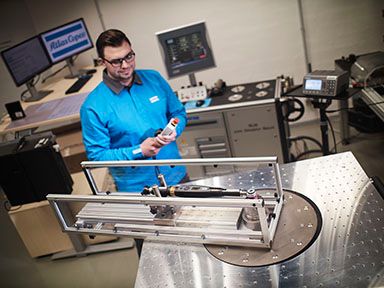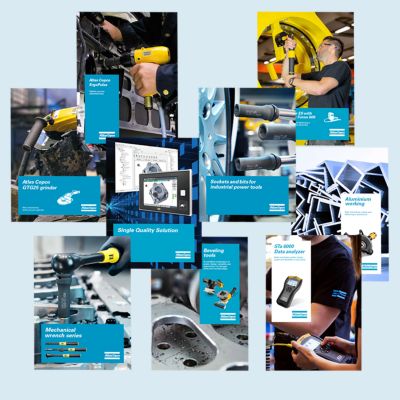Es posible evitar las rectificaciones y revisiones en la línea de montaje si se controla la calidad durante el proceso de apriete de modo que se detecten los fallos inmediatamente.
Hay varias formas de fijar las piezas y componentes entre ellos, como el pegado, el remachado, la soldadura blanda y la soldadura fuerte. Sin embargo, el método más común para unir componentes, sin duda, es usar un tornillo para amarrar las partes de la unión con una tuerca o directamente al orificio roscado de alguno de los componentes. Las ventajas de este método son la simplicidad del diseño y el ensamblaje, la sencillez del desmontaje, la productividad y, en última instancia, los COSTES.
¿Cómo se puede calcular el par?
Por razones prácticas, el par de apriete suele ser el criterio empleado para especificar la pretensión al atornillar. El par, o el momento de fuerza, se puede medir tanto de manera dinámica, al apretar el tornillo, como de manera estática, comprobando el par con una llave dinanométrica después de haberlo apretado.

Par = FUERZA x LONGITUD
Las especificaciones de par varían de manera considerable según los requisitos de calidad de la unión. Una junta crítica de seguridad, como la suspensión de rueda de una motocicleta, por ejemplo, no puede fallar, por lo que está sujeta a requisitos de tolerancia muy estrictos.

Para conseguir un mayor control de calidad, se puede añadir el ángulo de apriete a los parámetros de medición. Esto se puede usar en la parte elástica del tornillo para comprobar que estén presentes todas las partes de la unión, como, por ejemplo, que no falta ninguna junta o arandela. Además, se puede verificar la calidad del tornillo midiendo el ángulo de antes de apretarlo, así como para el aumento de par final.
En procesos de apriete sofisticados, también se puede usar el ángulo para definir el punto elástico y permitir el apriete en la parte plástica del tornillo.
¿Cómo se mide el par?
Las mediciones de par siguen uno de estos dos principios:
- Medición estática, en la que se comprueba el par de apriete una vez completado el proceso de apriete.
- Medición dinámica, en la que se mide constantemente el par durante todo el ciclo de apriete.
En conclusión, el control de la calidad suponía tradicionalmente la medición del par que genera fuerza de sujeción. Sin embargo, los resultados de apriete también se ven afectados por los cambios en la fricción o los componentes. Por lo tanto, es necesario medir también un segundo factor, que normalmente suele ser el ángulo de rotación. El control y la monitorización del par y del ángulo permiten detectar fallos, como la falta de juntas, roscas pasadas, problemas de materiales o errores del operario. Al garantizar la calidad del proceso de apriete, reducirá al máximo los costes de las revisiones, rectificaciones y reclamaciones de garantía, y evitará que su buena reputación se vea perjudicada.
Descargue nuestro libro electrónico a continuación para encontrar toda la información.
- Pocket Guide to Tightening Technique 3.2 MB, PDF
También le ofrecemos la exclusiva solución de consultoría de apriete de Atlas Copco, que optimiza su estrategia de apriete desde el diseño (I+D) hasta la producción en serie con nuestro laboratorio y expertos de apriete.




